“Much of my work is ancient memory,” says 81-year-old Chicana artist Amalia Mesa-Bains. “And it includes excavating the past—it is how we give ourselves to a sense of tradition and belonging.”
After many years of teaching, Mesa-Bains responds to questions with the severe aura of a university professor. But there is a great calmness about her. She is dressed in black and holds a walking stick, and her face carries many decades of gathered wisdom.
Mesa-Bains is seated in a small, low chair, somewhere in El Museo Del Barrio in New York. Her long-overdue retrospective, The Archaeology of Memory, is being installed as she speaks. The show features Venus Envy Chapter IV: The Road to Paris and Its Aftermath, Curandera’s Botanica. This mixed media installation, which Mesa-Bains created in 2008, is now in the National Gallery’s collection.
“The archaeology of memory begins with trying to find the past,” she says, “but it continues with talking about the present. How we develop tools for surviving.”
Personal and Collective Memory
“I always find it hard to talk about this country,” says Mesa-Bains, who was born and grew up in Santa Clara, California. Her Mexican parents were, for a long time, undocumented residents of the United States. It would take her “many years to feel at home.”
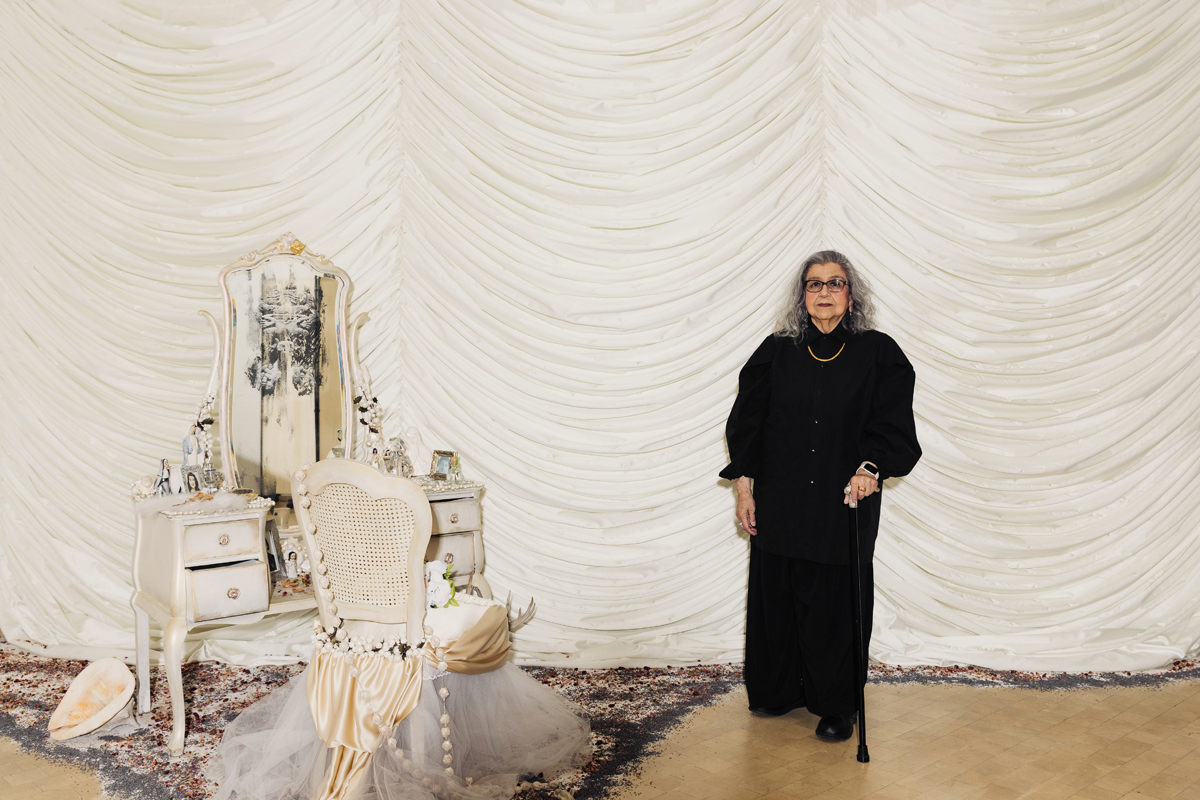
Amalia Mesa-Bains with her work Venus Envy Chapter I: First Holy Communion, Moments Before the End, 1993/2022, mixed media installation. Courtesy of the artist, Rena Bransten Gallery, San Francisco. Photograph by Daniela Spector.
Mesa-Bains draws inspiration from the vibrant culture of Mexico for her work. She combines personal and collective memory, with a particular focus on the experiences of women. Her installations are made up of personal effects—sometimes her own and sometimes those of friends and relatives. Usually set up in the form of altars, these vibrant, works can be haunting. They often contain pieces from people who have passed away.
Ancestors—especially women ancestors—play a central role in her thinking and her practice. Her inspirations include her grandmother Mariana Escobedo Mesa, whose image is now famous, having been included in the artist’s work so many times. “I like to think about lineage,” she says. “We Chicanos have been here for so long, there is a joke about how we didn’t cross the border, but the border crossed us.”
An Artistic Evolution
For the first 15 years of her artistic journey, Mesa-Bains only made short-lived works of art. “I didn’t have the good sense to take pictures,” she says, referring to the period between 1970 and 1985. “We just didn’t think that way. The ephemeral was a tradition we grew up in, so this wasn’t unusual.”
Then, she used to call herself a “bag lady” because she carried her things in brown paper bags. She would load up her trunk with fabrics, plants, stones, and more—and drive off to create her art. It wasn’t until the early ’90s, when she got sick and needed surgery, that the impulse to make more permanent work began to creep in.
Mesa-Bains’s art is genre-bending, usually elaborate and thoughtful. She mixes large and small objects of varied materials, colors, and textures. These items have themselves gone through transitions and various experiences. People have used them for different purposes. Every object in her work is, in this sense, a kind of witness.

Amalia Mesa-Bains, Venus Envy Chapter IV: The Road to Paris and Its Aftermath, Curandera's Botanica, 2008/2023, on view at El Museo del Barrio. Mixed media installation, Patrons' Permanent Fund and Purchased with support from the Ford Foundation, 2024.1.1
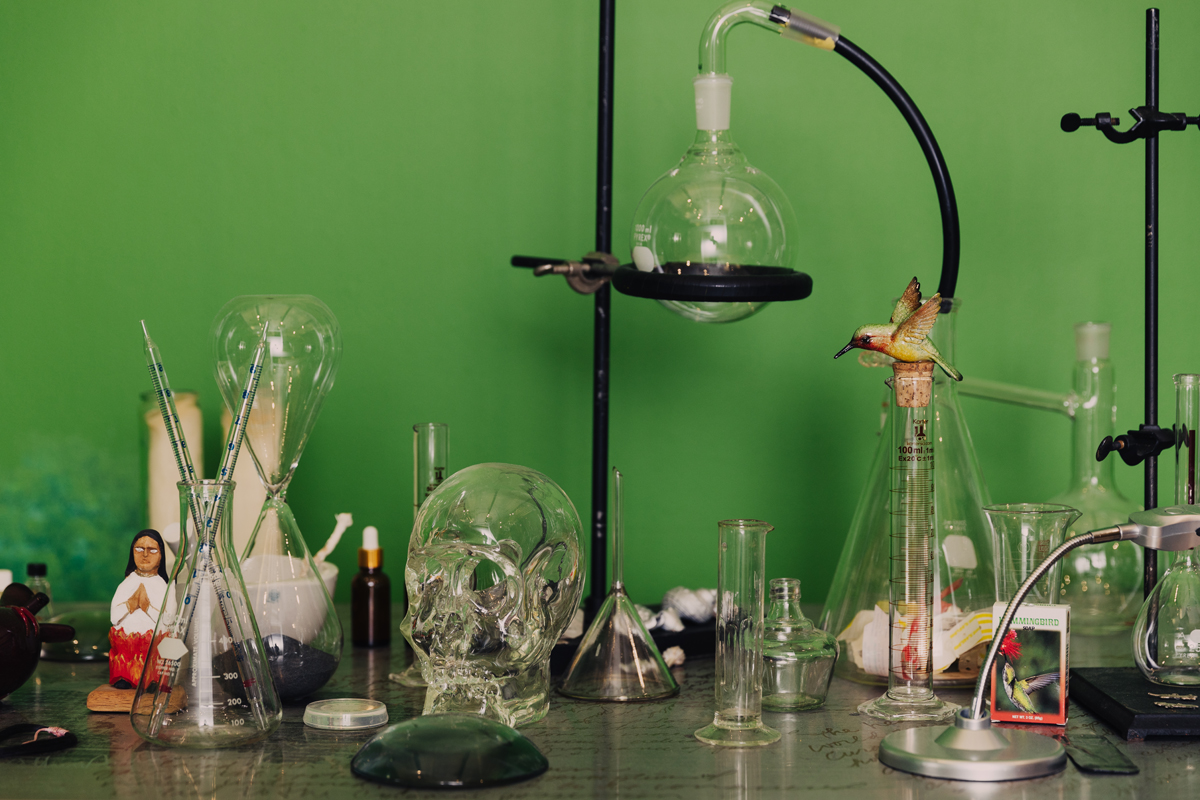
A detail of Venus Envy Chapter IV: The Road to Paris and Its Aftermath, Curandera's Botanica, 2008/2023. The work is a collection of objects and ideas important to Amalia Mesa-Bains.
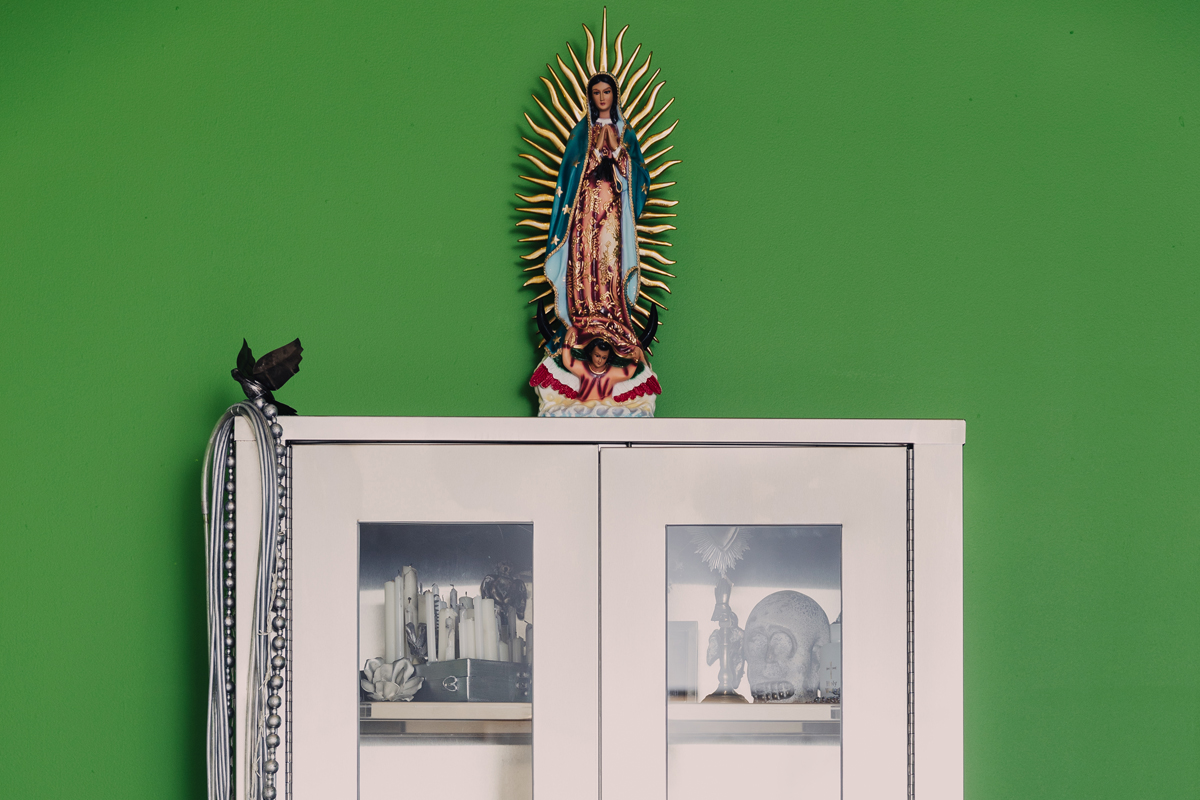
The work has more than 400 of the artist's "cositas" or little things, including objects from her family and friends.
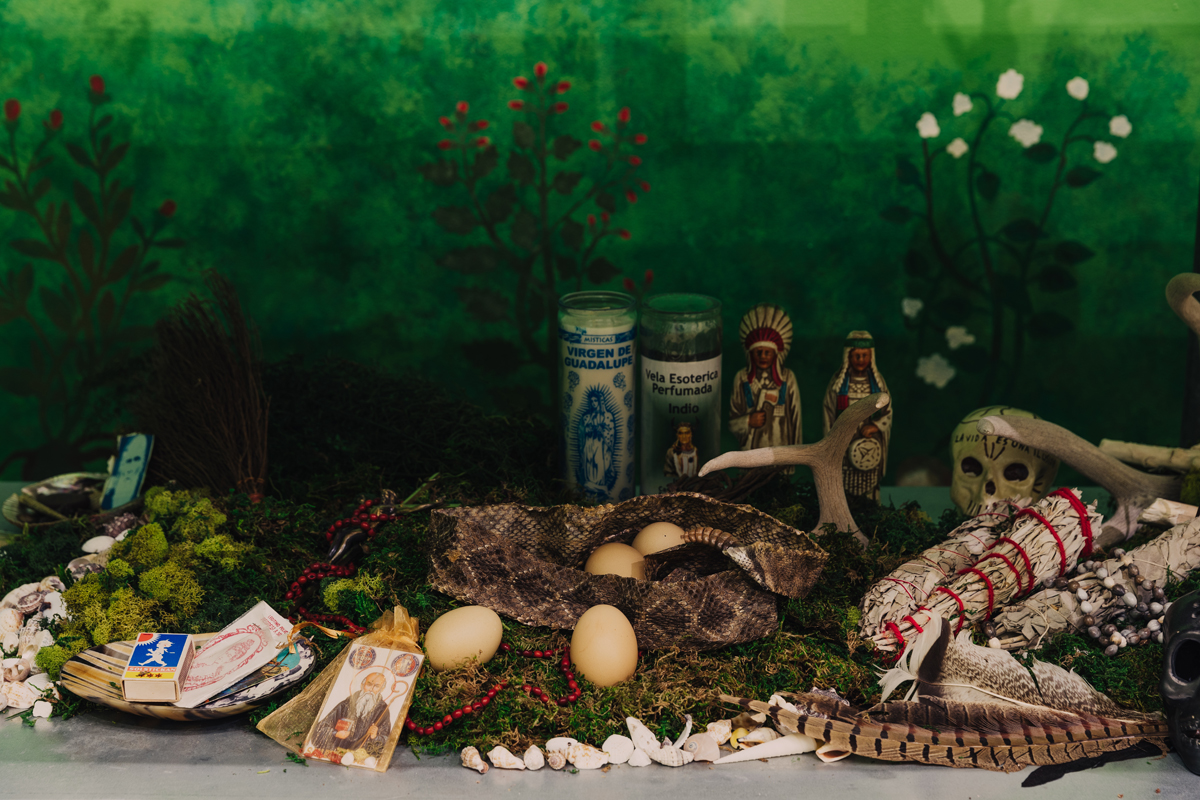
The work is inspired by the “curandera” (women folk healers who use traditional medicine) and features medicine from natural sources such as plants and animal skins.
A Collection of Cositas
Curandera’s Botanica is a collection of objects and ideas important to Mesa-Bains. Inspired by the “curandera” (women folk healers who use traditional medicine), it features medicine from natural sources such as plants and animal skins. These are combined with more traditionally “scientific” items—chemistry beakers, flasks, and titrating sets. Some reference her family’s medical battles: here are the artist’s own oxygen tubes and her sister’s hospital bracelets.
Mesa-Bains refers to some of the objects in Curandera’s Botanica as “my cositas or little things, and they are hard to give up.”
She goes on, “This work has 400 of my cositas: objects from my parents and my sister, my artist friends, and some are found objects. I’m grateful the National Gallery of Art is taking this piece because it is the closest to me that I have ever made. Because it is about many events from my life, my health, my ancestors, the faith I have and the tradition of healing.”
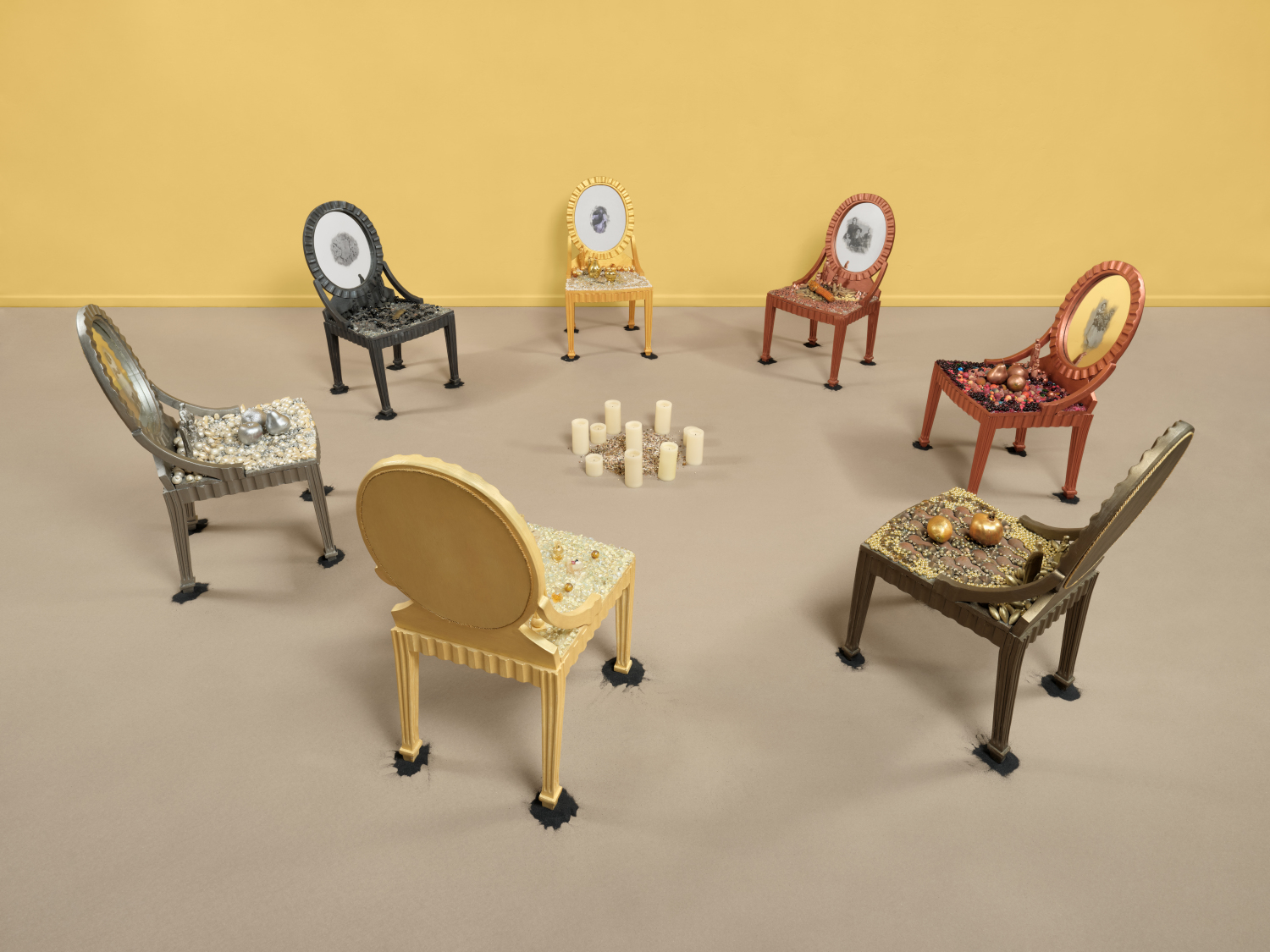
Amalia Mesa-Bains, Circle of Ancestors, 1995, mixed media installation including candles and seven hand-painted chairs with mirrors and jewels, courtesy of the artist, Rena Bransten Gallery, San Francisco.
A Lasting Contribution
Mesa-Bains is also known for her long-term activism and feminism in the context of Chicano culture. In her 1999 essay “Domesticana,” the artist reflected on the common Chicano practice of repurposing materials. She explained that “the family altar functions for women as a counterpoint to male-dominated rituals within Catholicism.”
Her goal of centering Chicana women in community and history carries through to her art. For example, Circle of Ancestors features seven hand-painted chairs decorated with jewels. They surround a set of candles. Portraits of women—including friends, her grandmother, and Mesa-Bains herself—are affixed to the backs of the chairs. This is how the artist celebrates her ancestors and her contemporaries.
Mesa-Bains has gained renown in the art world through the decades. She has made a lasting contribution to Chicana art that she hopes will carry on after she is gone. “No one completely dies,” says Mesa-Bains. “Memories of them circulate in conversations. People are always present even if they are not there.”
